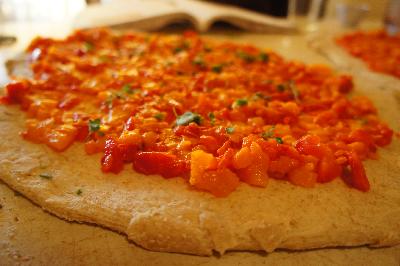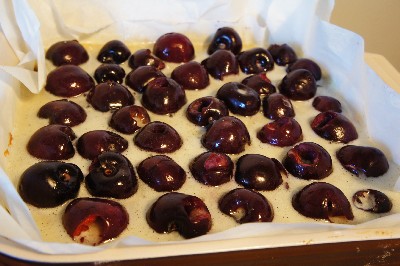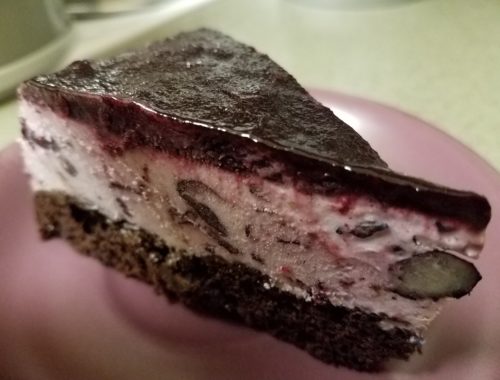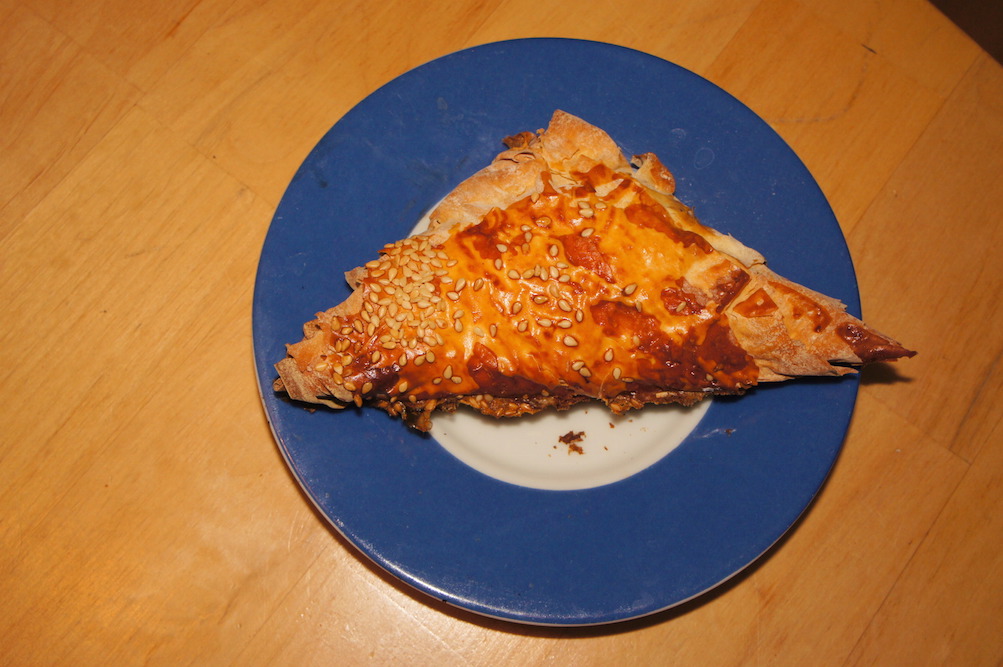
How to Make Bourekas at Home: the Wonders of Phyllo Pastry
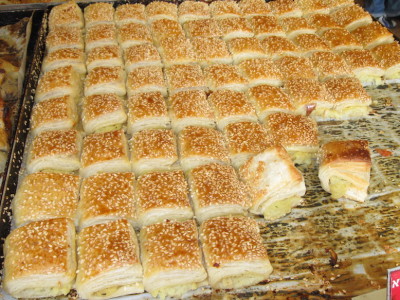
Growing up in Israel, trips to the supermarket were often rewarded by some Bourekas: crispy and often still warm flaky pastry triangles, filled with salty cheese and decorated with sesame seeds. At the time, it seemed like the best thing ever. It was only later that I realized that it was a low quality product – most Bourekas in Israel is made with margarine-based flaky pastry.

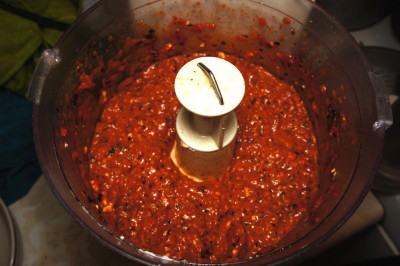
Some time later I came across phyllo, a paper-thin dough, which is very versatile and easy to work with. Using it, making homemade Bourekas is a snap! There’s a lot of room for creativity, both in the choice of filling, and the shape. Here are the recipes for two fillings I made recently, which could give those cheese Bourekas from my childhood a run for their money, as well as some directions how to make triangular Bourekas (or Börek, or whatever you are inclined to call them…). I left some of the amounts open to interpretation on purpose, feel free to experiment, this isn’t rocket science!
Roasted Red Pepper and Cheese Filling
Red peppers
Any type of feta, goat’s cheese or labneh (dry is preferred)
Eggs
1. Chop the red peppers into medium pieces, toss with a splash of olive oil, and place on a baking tray. Grill them, stirring every now and then, until they are soft and have some black bits but are not burnt (this can also be done on a BBQ).
2. Using a food processor, chop the grilled peppers with the cheese (or just mix in a bowl, if you prefer). Add an egg (or more) to bind the mixture together.
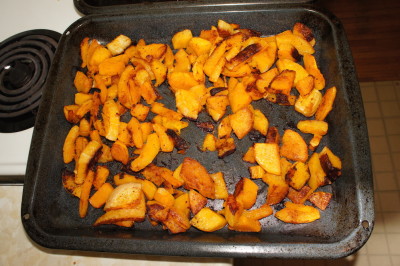
Butternut Squash and Pistachio Filling (Adapted from a recipe by Esther Rousso)
Butternut squash
Crushed pistachios
Freshly squeezed orange juice and zest
Cinnamon
Optional: some brown sugar
Optional: ground green cardamom (just a pinch)
1. Preheat your oven to 200C (400F).
2. Peel the squash, halve it, remove the seeds, and cut into small pieces. Toss with some olive oil, spread out on a baking tray and sprinkle with salt and black pepper. Bake until tender, about 30 minutes.
3. Stir together all the ingredients in a bowl and put aside.
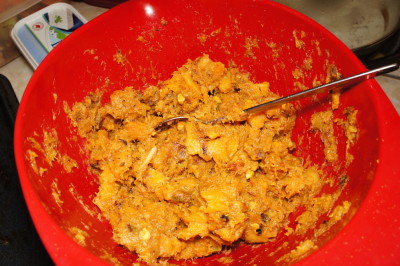
Bourekas
One package of phyllo pastry
Sesame seeds
One egg
Optional: Olive oil or melted butter for brushing
1. Preheat your oven to 180C (350F).
2. Clear a large working area, in your kitchen or on your dining room table. Unfold the phyllo sheets, and cut them all (together) into three equally sized rectangular piles.
3. Place one of the rectangular sheets on the work area. Drop two heaped tablespoons of filling (or as much as you’d like) in one of the corners. At this point you can baste the remainder of the strip with olive oil or melted butter, if you like (I usually don’t bother, see below).
4. Assuming your filling is on the bottom left corner, fold that corner up to the top edge of the sheet, creating a triangle of covered filling with an empty rectangle to the right. Now fold the top left corner over to the right, again creating a triangle, and keep going until you reach the end. At this point you should have a well wrapped triangle. If you end up with a small piece left over, just tuck it underneath. Place the triangle on a greased baking sheet, and repeat.
5. Stir the egg with a bit of water and salt, and brush the Bourekas. Then sprinkle sesame seeds on top.
6. Bake until golden and crispy, about 35-40 minutes. Let cool for a few minutes and eat while hot.

Tips
1. Once you open the package, phyllo dough can dry out rapidly. It’s helpful to work fast, and some people cover the dough with a moist kitchen towel to keep it from drying.
2. Once the phyllo dough has been taken out of the package, it’s tempting to use up some of it and then put the rest back in for another day. From my experience this tends to leave you with dry, broken phyllo that is very difficult to work with. A better way is to use up a whole package, and freeze the extra Bourekas (before baking) for another day.
3. Most recipes recommend basting the phyllo dough with olive oil or melted butter. I find that the result is very tasty without, so I usually save us the fat, but feel free to do so if you, prefer.
4. The Bourekas is easier to assemble if the filling is firm, and not runny. If your filling is very soft, use less, and wrap it with quick and decisive wrapping motions.

